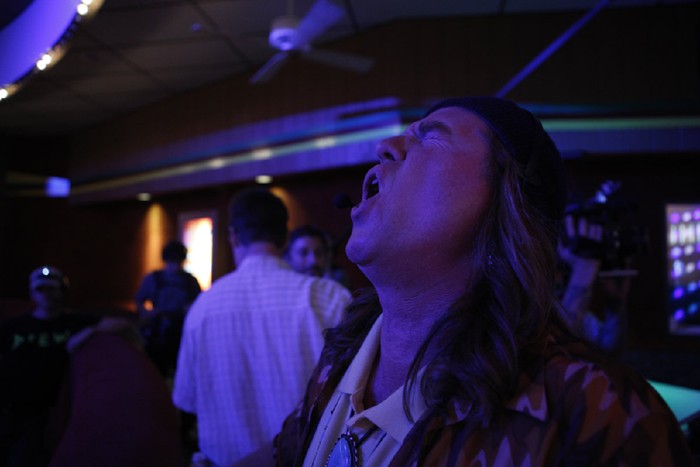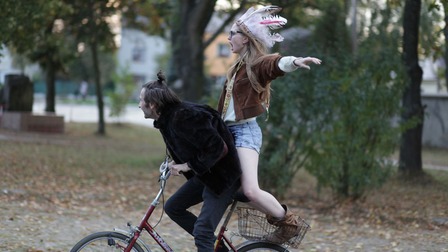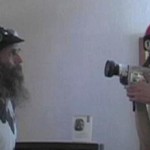AWESOME SECRETS
AWESOME SECRETS
Experiences in THE FOURTH DIMENSION
Kier-La Janisse
USA’s Harmony Korine, Russia’s Alexsei Fedorchenko (director of the elegiac Silent Souls, 2010) and Poland’s Jan Kwiecinski (making his big screen debut) were approached by Eddy Moretti and Shane Smith of Vice Magazine (and co-writers of Jesco White biopic White Lightnin’) with an interesting proposal: they would each get a 30min segment of a feature film, with which to explore their respective personal takes on the possibility of a fourth dimension.
Backed by funds from the Grolsch brewing company, Moretti handed down different guidelines to each director that canada cialis no prescription would act as starting points for their films. While some have likened these assignations to a re-imagining of the Dogme 95 rules, they are less obstacles than curatorial sparks; they are purchasing cialis with next day delivery meant to prompt the exploration of certain themes, as opposed to stringent adherence to technical mandates. Opening with quotes from Albert Einstein, Sergei Eisenstein and Back to the Future (the latter seems facetious, but only goes to show the historical pop-cultural crossover of fourth dimensional physics) and then each of the three chapters begins with the instructions given to director of that segment.
In Harmony Korine’s ‘The Lotus Community Workshop’, he is advised to blur fact and fiction so that the audience never knows what is true. Korine is a filmmaker whose work is often uncomfortably realistic (see future article about the technological manipulation behind Trash Humpers) even in its most stream-of-consciousness moments, making him the perfect trickster to tackle the assignment. Korine’s is the most star-studded affair of the triptych, not only in terms of Korine himself, but in its casting of Val Kilmer as “Val Kilmer”, who is reconfigured as a charismatic but shamelessly condescending movie star-cum-motivational speaker (complete with cartoonish sound effects as punctuation) who preaches his sermons in roller rinks and bowling alleys to a bizarre congregation of sketchy-looking townspeople, not only pulling the wool over their eyes, but ours too. He gives an amazing, hilarious and rather uncanny performance, making The Fourth Dimension his most interesting film choice since Piotr Urlanski’s 2006 Summer Love (where he curiously played an unmoving cadaver for the entire film!)
The second story belongs to Russian director Alexsey Fedorchenko, who gives us ‘Chrono Eye’, the story of a frustrated scientist (Igor Sergeev, also of Fedorchenko’s Silent Souls) unsuccessfully experimenting with time travel as a means of witnessing an important historic event, all while remaining emotionally disengaged from the present and its rather enticing opportunities. Fedorchenko’s guidelines were that the protagonist must believe in something so deeply that nothing else matters, and must also tell bad jokes (although if he made bad jokes, they must have been so bad that I didn’t pick up on them as jokes).
The third story’s guidelines have the most weight to them: to show a glimpse of the Fourth Dimension, and to “challenge our ideas of fourth dimensions”. After some beautiful tableaus of quaint stillness , Jan Kwiecinski’s “Fawns” depicts four obnoxious hipster youths (complete with Indian headdress/Buddy Holly glasses combo) wandering through a deserted town, exploring the houses, streets and shops that have been abandoned in the wake of a dangerous flood warning.
More than either of the others, which do make overt references to the theme, Kwiecinski’s film begs the question what is The Fourth Dimension? My brain hurts even trying to think about it; while modern physics tells us that there could be as many as 20+ dimensions, we typically think of having three physical dimensions, with time operating as the fourth dimension, and ‘spacetime’ being the unification of them both into a single construct. This latter concept of a space-time continuum was named by Hermann Minkowski just after the turn of the last century (even though it had been adopted by the Incas centuries earlier), and later provided the mathematical foundation for Einstein’s Theory of Special Relativity. The concept of time as the fourth dimension has been seized upon by sci-fi writers who use it narratively as a vehicle for time travel; while we can navigate through the three physical dimensions, learning how to travel through the fourth dimension – if you look at it as a pathway of time – is not something we’ve mastered. Of course one of the most interesting price check 50mg viagra things about the possibility of the fourth dimension as time, is that travel along that path between the past, present and future, would lead to predetermined points, which threatens our concept of free will. In Alexei Fedorchenko’s film, the one that specifically employs the concept of time travel, our curmudgeonly scientist is getting messages from the future without realizing it, and when he goes there, it follows the exact path predicted, although it is admittedly a reprieve from his dreary former existence.
Of course, this is from a purely scientific standpoint. Later, more pop-cosmological theories about the fourth dimension saw it as an actual physical dimension through which we could have transcendental experiences, or further still, saw the concept of the ‘spirit’ itself as the fourth dimension. When “Val Kilmer” refers to the Fourth Dimension in his boisterous speeches in Harmony Korine’s film, he is addressing the concept transcendentally and pop-cosmically, in the same breath as alien creatures and motherships – and thus peppered with a heavy helping of bullshit. So there are several readings, some more scientific than others, about what the Fourth Dimension refers to, which is one of the fun elements of allowing each director their own interpretation of the theme.
Put together, the three films – which were done without any collaboration between the various directors about how their segments would fit together–make an interesting whole, an aesthetic and theoretical survey of ideas concerning one of our most mind-boggling and salacious scientific concepts.
—————————-
THE FOURTH DIMENSION has its Canadian premiere on Monday Aug 6th at 8pm and screens again on Aug 7th at 5:15pm, both in the Salle JA De Seve. More info on the film page HERE.

 August 6, 2012
August 6, 2012  No Comments
No Comments







